|
Getting your Trinity Audio player ready...
|
By: Ethel G. Hofman
Passover is just a few weeks away; there are signs of it everywhere. Kosher-for-Passover products are prominently displayed in major supermarkets. This year, especially, traditional dishes can be flavored and spiked with never-before-available kosher-for-Passover dried spices and herbs. Many of them, such as za’atar, shawarma and hawaij, are combination spices—three or more in one. Although labels may state soup seasoning or meatball spice, these combos add zing to other dishes. While the hawaij label states soup seasoning, it’s a blend of cumin, coriander, turmeric and cardamom. Besides soups, use it as a rub for chicken or in stews and fish dishes, even sprinkled over roasted vegetables.
On the eve of April 22 (the 14th day of the Hebrew month of Nissan), Jews all over the world will gather for the first seder. On this Jewish festival of freedom, it’s estimated that more than 80% of Jews, no matter how observant, will travel near and far to attend a Passover seder, the focal point of the eight-day holiday (seven days in Israel). With Ukrainian Jews again on collective minds this year, freedom for the oppressed makes Passover even more meaningful.
Besides reading the Haggadah, which retells the story of the Exodus from Egypt; singing songs and searching for the afikomen, the festive meal is the highlight of the evening’s proceedings. The entire eight-day celebration in the Jewish Diaspora revolves around the prohibition of chametz, leavened foods. Originally, in the Ashkenazi community in Eastern Europe, only five grains were considered chametz: wheat, barley, spelt, rye and oats. Post-Talmudic authorities added rice and legumes, such as peas and beans. But for Sephardim living in Spain, Portugal and North Africa, the main foods available were rice and legumes, so contemporary Sephardic Jews eat both during Passover. In the Hofman house, the first seder is traditional Ashkenazi. The second, a Sephardic meal, is lightened with fruits, vegetables and an array of different spices.
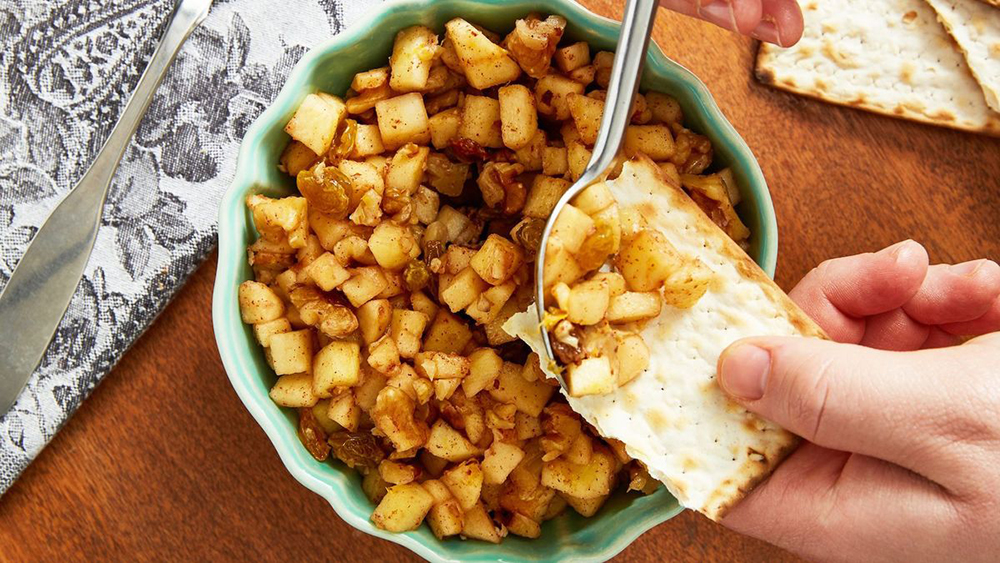
Charoset, essential on the seder plate, is symbolic of the mortar the Jews worked with during their seemingly endless years of slavery. Ashkenazi-style, the mixture is mainly apples and nuts. For Sephardim, there’s nary an apple in sight. Ingredients are exotic, using fruits and spices that grew abundantly in the Mediterranean area and Africa (recipe below). Sephardic eggs are slow-cooked so that whites become a creamy brown color. Besides the traditional brisket, serve fish (in this case, easily available flounder) seasoned with za’atar and lemon, and then baked on a bed of cherry tomatoes, celery and onions. Roasted vegetables are drizzled with date tahini and a sesame paste to become mellower. For a light dessert, poached pears are best made ahead of time and chilled. And there’s sure to be at least one vegan in the gathering, so I had my niece test the Chocolate Whip, and it was a winner.
All ingredients are kosher for Passover. Chag Pesach Sameach!
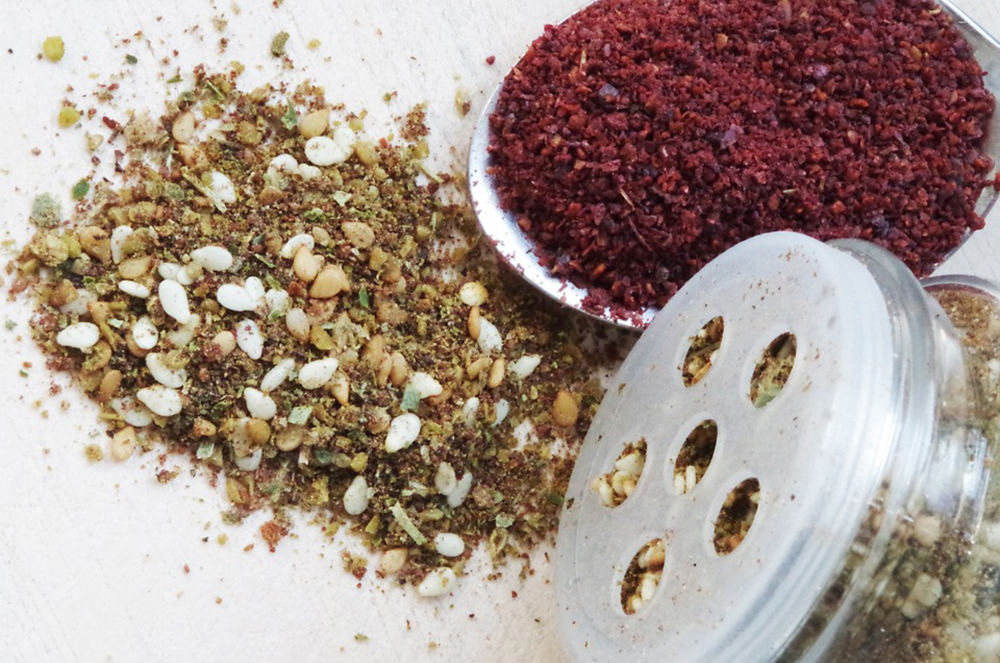
Menu
Sephardic Eggs
Moroccan Charoset Truffles
Flounder Roll-Ups on Braised Vegetables
Golden Veggie Kugel
Roasted Broccoli and Squash with Date Tahini
Pale Poached Pears
Vegan Chocolate Whip
Sephardic Eggs (Pareve)
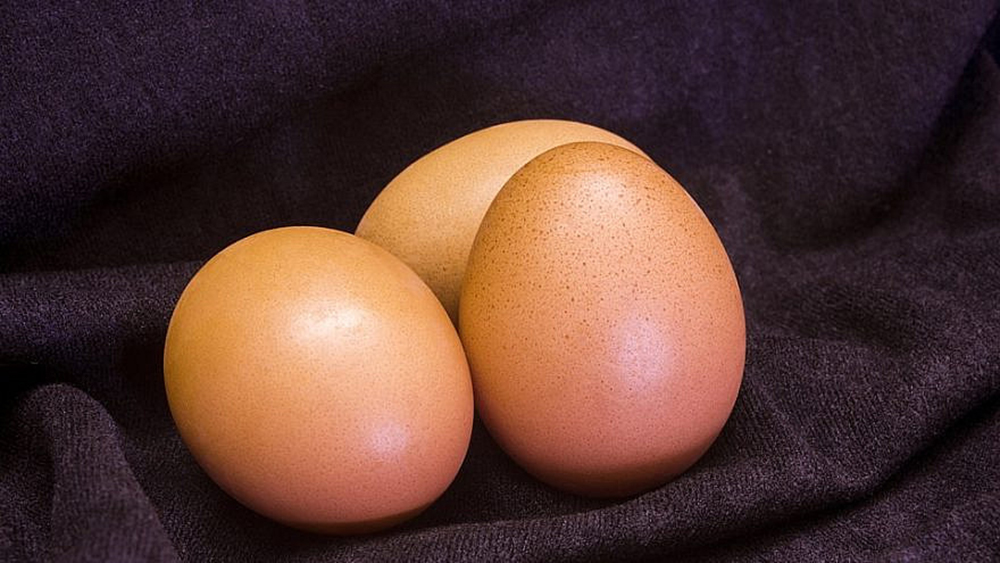
Makes 12
Cook’s Tips:
*May use a crockpot. Cover the eggs with at least 2 inches of water. Eggs are pasteurized by cooking at 140 degrees for 30 minutes starting off at high. After 1 hour, reduce heat to low. Cook 4 hours longer.
*After the eggs have been cooking for 3 hours, gently tap the shells with a spoon to show the marbling color on the egg whites.
Ingredients:
- brown skins of 2-3 onions
- 12 eggs in shells
- 1 tsp. instant coffee
- 2 tsp. turmeric
Directions:
Spread the onion skins over the bottom of a large pot. Gently place eggs on top.
Moroccan Charoset Truffles (Pareve)
Makes 12-15
Cook’s Tips:
*Substitute allspice—a combination of cinnamon, cloves and nutmeg—for Moroccan spice.
*Substitute dried cranberries for expensive dried cherries.
*Place each truffle in paper candy cups.
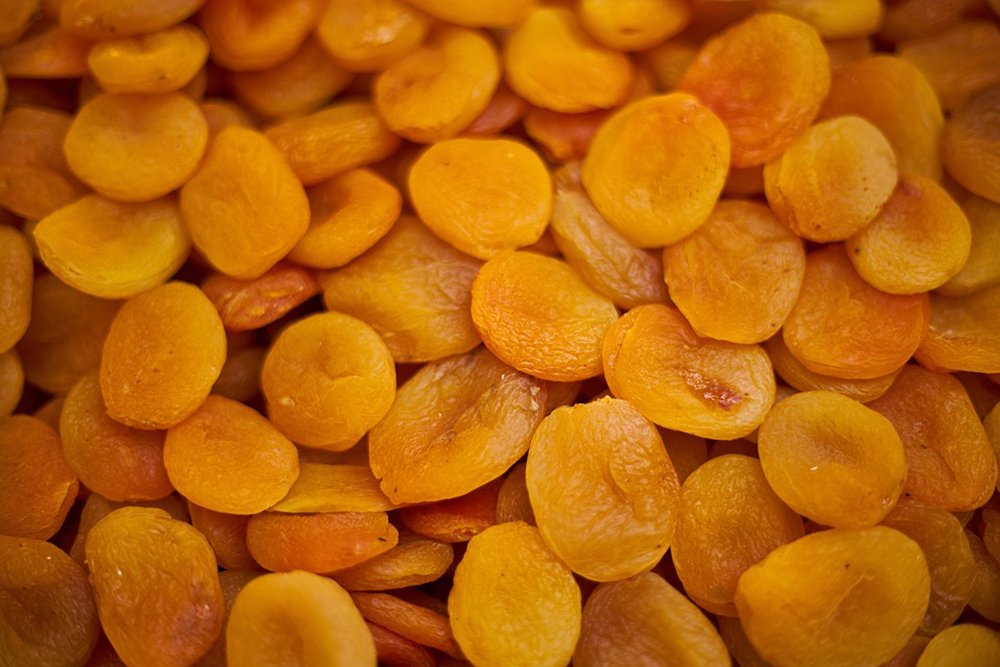
Ingredients:
- 14 pitted dates
- 1 cup dried apricots, halved
- ½ cup pitted dried cherries
- ¼ cup walnuts
- 1 seedless mandarin orange, peeled and cut into chunks
- 1 tsp. Moroccan spice
- 2 Tbsp. sweet wine
- 2 Tbsp. honey or to taste
- ⅓ cup ground almonds
Directions:
In a food processor, place the dates, apricots, cherries, walnuts, orange and Moroccan spice. Pulse to chop coarsely.
Add wine and honey. Pulse to process to a coarse paste. Chill for 1 to 2 hours.
Roll into small balls, about 1 inch in diameter. Roll in ground almonds. Serve chilled or at room temperature.
Sprinkle the coffee and turmeric over top.
Pour enough lukewarm water over to cover eggs by at least 2 inches. Bring water to a boil.
Cover and reduce heat to a slow boil. Cook for 1 hour. Reduce heat to simmer. Cook for at least 3 hours. (The water may evaporate, so add more warm water as needed.)
Serve at room temperature, arranged on drained onion skins.
Flounder Roll-Ups on Braised Vegetables (Pareve)
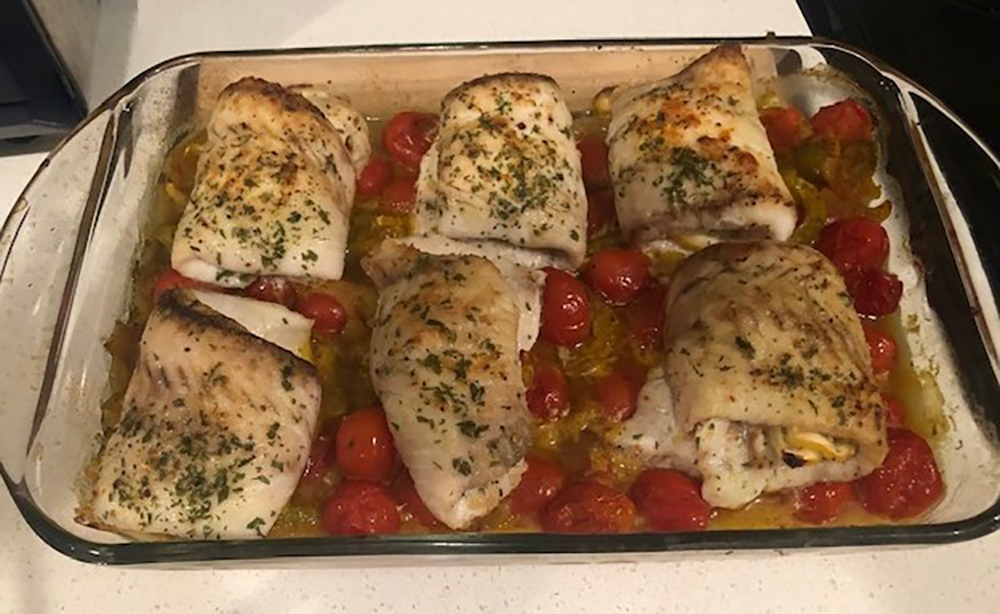
Serves 6
Cook’s Tips:
*Tilapia fillets or other flat white fish may be used.
*Za’atar is a mixture of herbs that includes toasted sesame seeds and sumac.
Ingredients:
- 3 Tbsp. olive oil, divided
- 3 ribs celery, sliced about ¼ inch thick
- 1 medium onion, sliced thinly
- 2 pints cherry tomatoes
- 1½ tsp. cumin
- 3 (about 2½ lbs.) flounder fillets
- za’atar to sprinkle
- salt and freshly ground pepper
- 6 thin lemon wedges
- olive oil
- dried parsley
Directions:
Preheat oven to 400 degrees.
Heat 2 tablespoons of olive oil over medium heat in a large skillet or pot. Add the celery, onion and tomatoes. Cook over medium heat, stirring often, until tomatoes are beginning to soften, 4 to 5 minutes.
Transfer to a large (9×13 inch) baking dish. Sprinkle with cumin. Set aside.
Cut flounder fillets in half lengthwise. Lightly sprinkle each half with za’atar, salt and pepper. Top with a lemon wedge. Roll up beginning at the thin end. Place on top of the tomato mixture. Brush with olive oil and sprinkle with parsley.
Bake in preheated oven for 20 minutes until the flounder begins to brown and has lost its opaque appearance.
Serve hot.
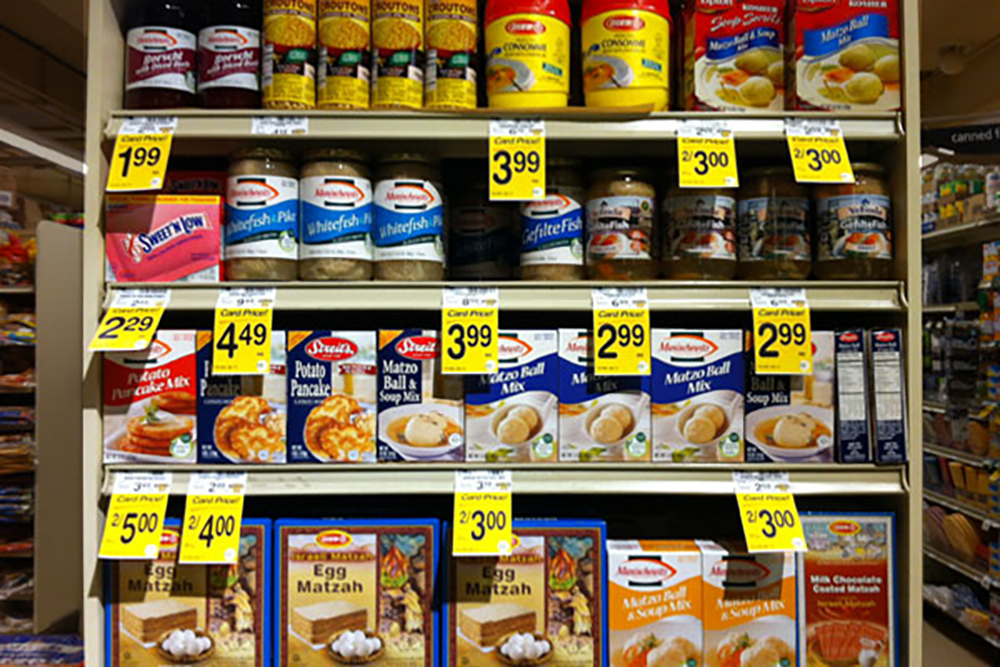
Golden Veggie Kugel (Pareve)
Serves 8-10
Cook’s Tips:
*Use store-bought grated carrots in a bag.
*Chop apples and potatoes in a food processor.
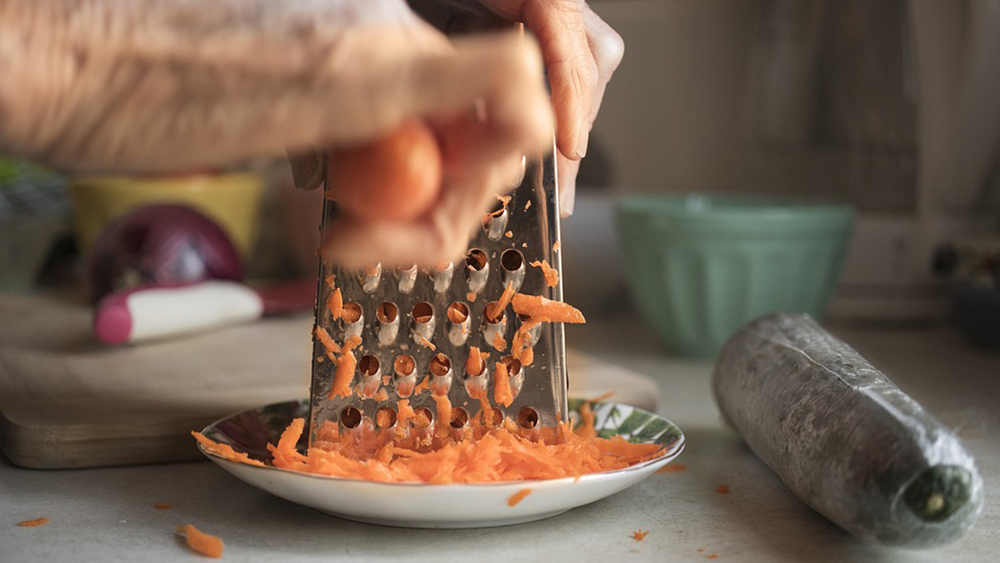
Ingredients:
- ½ cup matzah meal
- scant ½ cup sugar
- 1 tsp. nutmeg
- 1 tsp. cinnamon
- 1 tsp. ginger
- ½ tsp. salt
- ½ tsp. red-pepper flakes
- 2 large apples, unpeeled, coarsely chopped
- 2 medium sweet potatoes, peeled and coarsely chopped
- 1 large baking potato, peeled and coarsely chopped
- ½ cup grated carrots
- 1 cup golden raisins
- 2 Tbsp. frozen orange-juice concentrate, thawed
- grated zest and juice of 1 large lemon
- 1 stick (8 oz.) margarine, melted
Directions:
Preheat oven to 350 degrees.
Spray a 9×13-inch baking dish with nonstick vegetable baking spray.
In a large bowl, combine matzo meal, sugar, nutmeg, cinnamon, ginger, salt and red-pepper flakes.
Add the remaining ingredients. Mix well. Transfer to the prepared baking dish.
Bake in preheated oven until firm and nicely browned, about 1 to 1¼ hours.
If browning too quickly, cover loosely with foil. Cool slightly, cut into squares and serve warm.
Roasted Broccoli and Squash Drizzled with Date Tahini (Pareve)
Serves 6-8
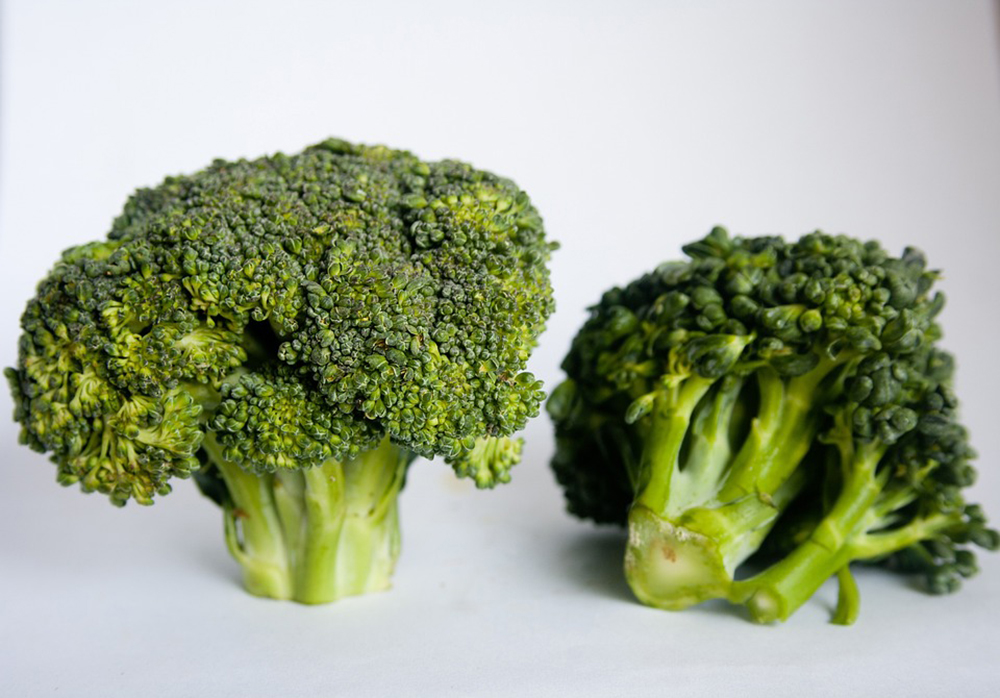
Cook’s Tips:
*Use store-bought broccoli florets and cubed squash.
*Roast broccoli and squash separately to tenderize.
*Heat through in microwave before serving if needed.
Ingredients:
For the Date Tahini:
- 4 pitted dates
- hot water to cover
- ¼ cup tahini
- 1 tsp. sumac
- water as needed
- 1 bag (12-14 oz.) broccoli florets
- 2 boxes (12 oz. each) of cubed squash
- 3 tablespoons olive oil, divided
- salt and freshly ground pepper
Directions:
Prepare the Date Tahini.
Place dates in a cup and cover with hot water. Let stand at room temperature for 30 minutes to soften. Transfer the date and water mixture to a blender or food processor. Add tahini, sumac and ¼ cup water. Pulse 3 to 4 times to chop dates finely. Pour into a bowl. Add enough water to make a pouring consistency. Set aside.
Preheat oven to 400 degrees.
Toss the broccoli with olive oil, salt and pepper. Spread on a baking sheet.
Roast in preheated oven for 20 minutes or until beginning to brown. Set aside.
Repeat with squash. Roast in preheated oven for 20 minutes or until beginning to brown and tender when pierced with a sharp knife.
Arrange broccoli and squash in a serving dish. Drizzle with date tahini and serve.
(JNS.org)




